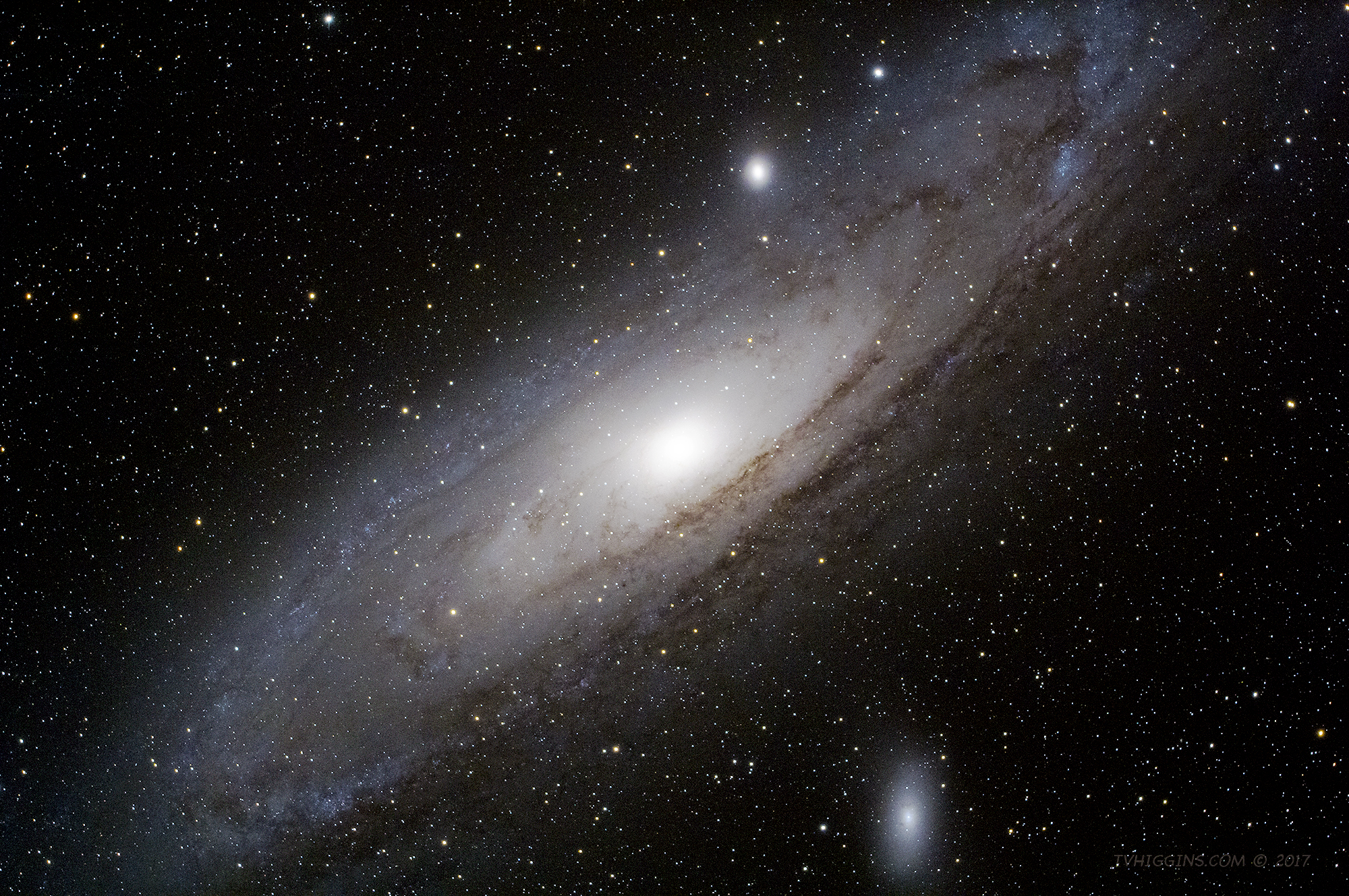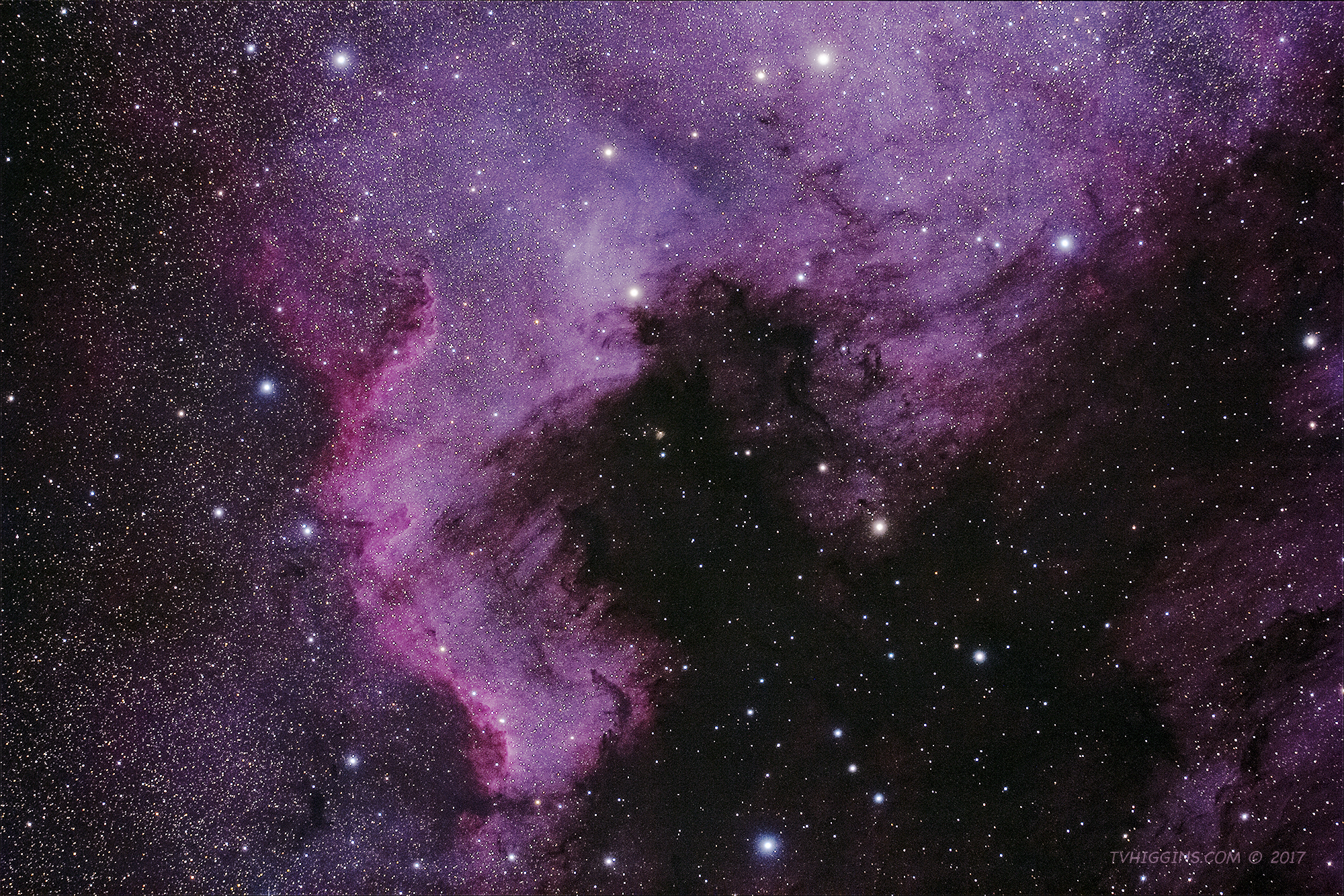The Andromeda Galaxy
- Telescope: Stellarvue SVA130T-IS
- Mount: Losmandy G-11 with Gemini 2 controller
- Autoguiding: Yes (sub-arcsecond rms accuracy)
- Optical Configuration: 0.72x field flattener & reducer (f/5)
- Camera: Canon 60Da
- Light Frames: 12, 5-min. exposures stacked
- Calibration: None (no darks, no flats, no biases)
- Exposure Time: 60 min. (12 x 5 min.)
- ISO: 800
- Processing: Photoshop CC
- Imaging Location: Sierra Nevada Mountains (Altitude: 8,600 ft.)
The Andromeda Galaxy (M31) is about 2 1/2 times larger than our Milky Way and contains an estimated 1 trillion stars. At a distance of 2.5 million light-years, it is our nearest galactic neighbor and getting closer to us every day at nearly 70 miles per second. But even at that speed, our galaxy won’t collide with Andromeda for at least another 4 billion years. So don’t hold your breath.

